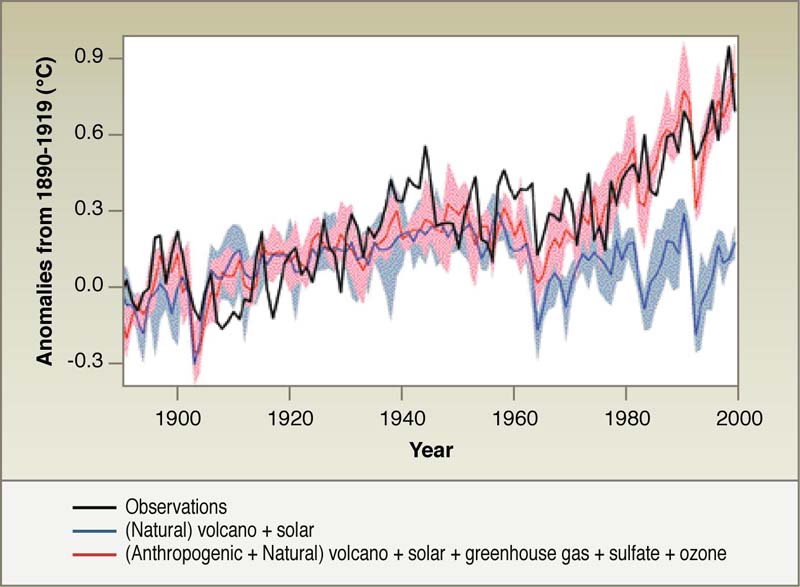Natural Variation
Natural variation includes internal and external variability influences such as the solar Schwabe cycle, oceanic cycles, seasonal influences based on changes caused by the interaction of the various natural oscillations in the climate system. These variations combined influence regional climate and weather on periodic basis as well as influence weather event patterns.
Getting familiar with some of the oscillations that occur that influence natural variability helps one understand the role of natural variation in the climate system as well as how it influences weather. Here are some, but certainly not all of the natural systems that oscillate affecting the climate and weather on earth:
- Arctic Oscillation
- Antarctic Oscillation
- Atlantic Multidecadal Oscillation (AMO)
- Pacific Decadal Oscillation
- The Schwabe Solar Cycle
- El Nino Southern Oscillation
Of course there are more oscillations and we will expand the list as time allows, but the main point is to be aware that there are a lot of different oscillations in the natural variability of the climate system.
When one compares the path of climate that we were supposed to be on vs. the path we are on … one suddenly gets the feeling that we may have taken a wrong turn… Honey, weren’t we suppose to turn right back there?
To understand natural variation you need the context of time scale. If you are talking over a period of hundreds of thousands of years natural variability looks different than if you are talking about decades, or years.
The National Academy of Sciences, National Research Council, Board on Atmospheric Science and Climate Present:
‘Climate Change: Lines of Evidence’ – Natural Variation
Two Roads
As you can see in the graph, there are two roads, both depict natural variability. The difference between these two roads is that one road (the blue road) is natural variability on the expected path of an earth climate that does not have added Greenhouse Gases from industrial sources; and the other road, (the red road) is the road we are on.
Long Term Natural Variability (100k year periods)
This is long term climate variability.
If you were to look at periods of natural variability over the past 1 million years, you would be likely focusing on the natural variability caused by the Milankovitch cycles. Those are the cycles that alter the shape of our orbit around the sun as well as the tilt and wobble of the earth axis. These cycles have periodicity in the scale of thousands of years with the average longer term period of around 100,000 years.
Short Term Natural Variability (decades, years, months, weeks)
This is short term climate leaning into long term weather and climate patterns. Regionality begins to increase in importance the shorter the time scale.
When you are looking at short term natural variability, you are looking at shorter solar cycles and internal earth environmental factors. These can include thermal inertia in oceans, ice sheets and various inter-dynamic oscillations between oceans, land and ice interacting with highly variable weather patterns, jet steam shifts, clouds, El Nino and La Nina, etc.
Short Term Natural Variability (months, weeks, days, hours, minutes)
This is the weather.
Weather, as we all know, is the most variable of all these considerations. ‘You know why the call them weathermen… they don’t know whether it’ll rain or not.’
How to reconcile climate and weather natural variability?
In short, variability happens. There will always be variability.
Do humans influence variability.
Yes, but understanding ‘how’ is important to keep from confusing natural variability and human influences on that variability. The only real difference is that the human influence changes the path of variability. In other words, variability will still happen, but on a different path.
Natural variability will not go away, but certain forcing components will drive us in another direction.
Think of it this way (I am not advocating drinking and driving) Let’s say you drink too much and start driving toward home. Your car is wavering due to the slow response time caused by increased alcohol in your bloodstream impairing judgment. You correct and get back toward the lane but you over correct, which leads to another correction to try to stay on the road. In this example, you are on the road and heading in the direction you should be, but the car is weaving a bit. That is, you are staying within natural variability (on the right road and heading toward home).
Now let’s add industrial forcing components of 1.6 W/m2 due to added industrial GHG’s. Let’s say that once again, you are fairly well impaired? The impairment causes you to get on the wrong road? Now you are going in a new direction. But you are still doing the same wavering you were doing before. Just on a different road.
In other words, the natural variability does not go away, it’s just variable on a new road, or path. IN this case the new path is a warming trend v. the more stable or declining trend as indicated by the modeled path of climate without industrial impaired forcing on the climate system.
Natural variability doesn’t go away, it just does its thing on the new (warming) road.
Links
- Related content
- Milankovitch Cycles
- Natural Cycle

